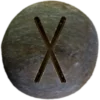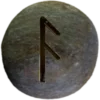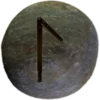Last Updated on June 8, 2025
Table of Contents


Mythology and Practice
Norse Paganism encompasses the pre-Christian religious practices, beliefs, and traditions of the Norse and Germanic peoples. This spiritual framework honors a pantheon of gods, the natural world, and a deep connection to ancestors. Known for its oral traditions, Norse Paganism is rooted in community and the cycles of nature, aligning with the changing seasons and agricultural life.
The Norse gods, divided into the Æsir (pronounced EYE-seer) and Vanir (pronounced VAH-neer), formed the core of the religion. The Æsir include deities such as Odin, Thor, and Frigg, representing wisdom, protection, and familial bonds. The Vanir, including Freyr and Freyja, symbolize fertility, prosperity, and harmony with nature. Rituals called blóts (pronounced BLOHTS) honored these gods, often involving offerings of food, drink, or sacrifices. ![]()
Ancestor veneration played a significant role in Norse Paganism. The dead were seen as active participants in the lives of the living. Pagans make offerings to ancestral spirits, or disir (pronounced DEE-seer), to seek their guidance and protection. Honoring the ancestors also reinforced the connection between families and the legacy passed through generations.
Norse Paganism recognized the spiritual presence in nature, known as vættir (pronounced VYET-teer). These land spirits inhabited forests, rivers, and mountains. By respecting and giving offerings to the vættir, individuals sought their favor and avoided misfortune. The relationship with the natural world was reciprocal, emphasizing the sacredness of life and the environment.
Norse Paganism also emphasized personal responsibility and living with honor. Values like courage, truth, and hospitality were vital, shaping how individuals interacted with their community and the world. These principles guided daily life, offering a moral framework rooted in the wisdom of the past.
Runes Associated with Norse Paganism
Two significant Elder Futhark runes in Norse Paganism are Ansuz (ᚨ) and Gebō (ᚷ). Ansuz, pronounced AHN-sooz, represents divine inspiration, wisdom, and communication. It is linked to Odin, the Allfather and god of knowledge. In Norse Pagan rituals, Ansuz often signifies insight and connection to higher powers. Gebō, pronounced GAY-boh, symbolizes gifts, balance, and partnerships. It reflects the reciprocal nature of relationships between humans, gods, and the natural world. Both runes embody the interconnectedness central to Norse Pagan beliefs. ![]()
Its Importance to Asatruar
For Asatruar, Norse Paganism provides the foundation for their spiritual path. It connects them to ancient traditions, fostering a sense of continuity with their ancestors. The values, rituals, and worldview of Norse Paganism help Asatruar engage deeply with their faith. By honoring these traditions, they preserve and adapt the wisdom of the past to modern life, creating a vibrant, meaningful practice.

